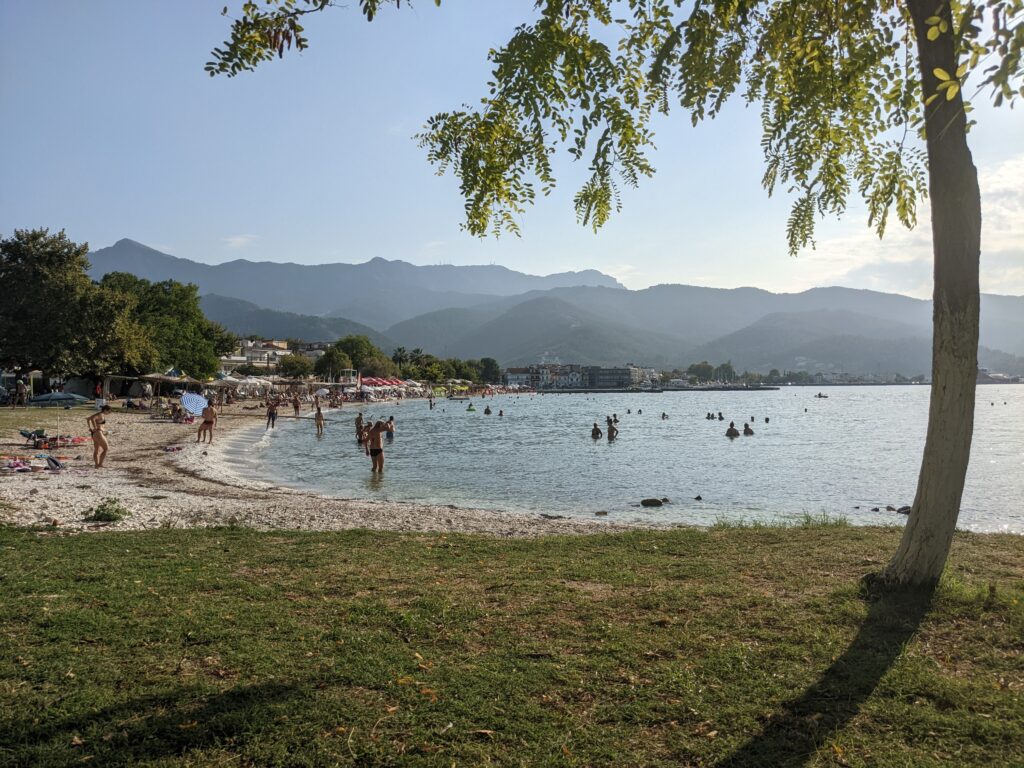We arrived on Thasos in the Northeastern Agean islands on 28 August (my birthday!) and took a bus to our Airbnb in Limenas, a town on the north coast. To celebrate (my birthday, not our arrival), we booked a table at Karnagio Beach Bar, and washed down the sunset views with a cocktail.

Despite the strength of the cocktails, we still managed a sunrise swim the next day. The beach was completely empty, and it was as if the waves hadn’t even woken up yet. Honestly, I’ve never seen a calmer sea in my life.
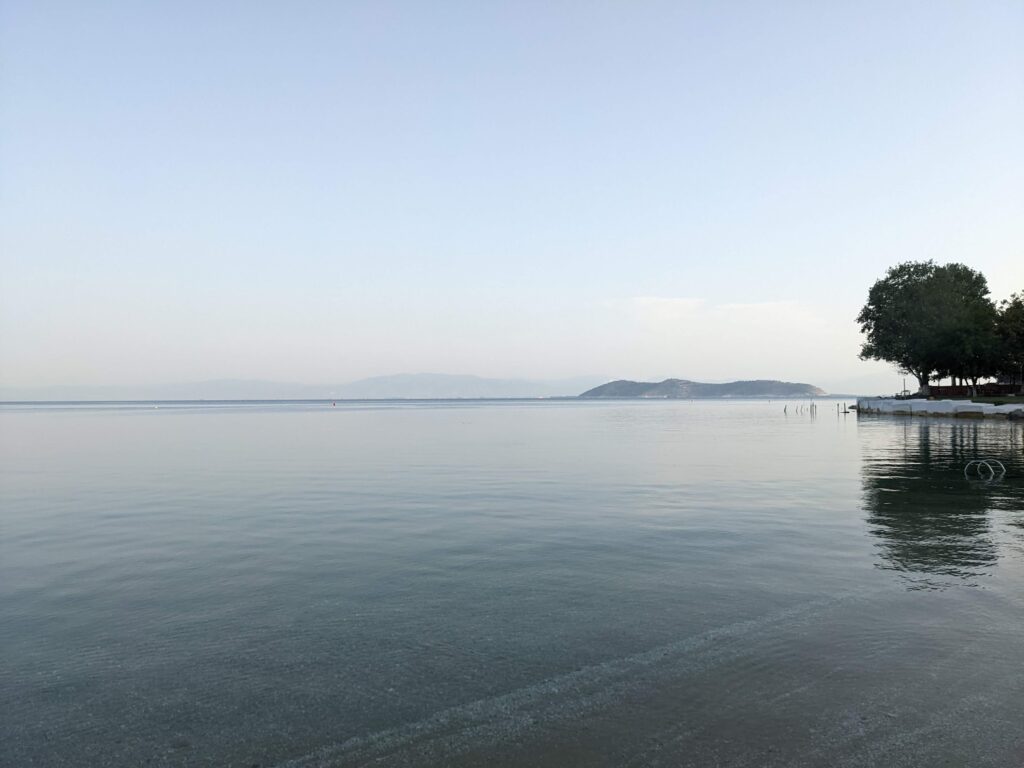
Being up this early also meant that we got to see some lovely glimpses of local life, like this lady picking figs from a tree on the seafront using an extremely long pole.

I went off to pick up some breakfast after the swim, and spent so long trying to find the coffee in the local supermarket (there was a secret upstairs), that I completely forgot to buy any yoghurt – the one thing Sara had requested for breakfast. I confessed to Sara when I arrived back, while she inspected the milk I’d just bought with a confused look her face. The plot twist was that the milk turned out to be yoghurt after all (it was all in Greek), and I was off the hook. Sara claims that this perfectly sums up what what it’s like to be married to me in a single anecdote.
With the relaxing part of our trip to Thasos over, we embarked on two excursions around the island over the following two days. Crucially, both trips would be completed without a car, which made the whole experience a little trickier than it might otherwise have been.
Excursion 1: Day trip to Alyki
Alyki is a tiny village on the south-east coast of Thasos, about 31 km from Limenas, or 1.5 hours (!) by bus. The bus journey passed without much remark, including sailing past Alyki without even a peep from the driver. It took a panicked shout from Sara to send me to the front of the bus to check with the driver. He let us off straight away, and we began the hot uphill road walk back to Alyki. I’m not sure how it’s possible to walk uphill to a beach, but we seemed to manage it. The atmosphere was tense and no photos were taken.
Sandwiched between two beaches, Alyki would have been the perfect place to relax. But we were on a mission, and after a necessary snack break, we set off to explore the peninsula beyond. This peninsular was interesting not just because it contained the ruins of an ancient basilica, but also for its disused marble quarry, which was in use as early as the 7th century BC! We’d shortly learn that Thasos sat on a huge amount of marble, which is why the rock everywhere is so white. The views weren’t bad either.


Finally, some relaxation was on the cards, and we spent the rest of the afternoon on the beach. We set up shop in a quiet spot on the rocks at the end of the beach, and enjoyed swimming in the beautifully clear water, turned turquoise when the sun caught the white marble beneath the surface.


At least, this would have been relaxing had there been more than one bus back to Limenas that afternoon. But you have to play the hand you’re dealt, so we started worrying about missing the bus a good few hours before it was due to depart, and were waiting at the bus stop no less than 30 minutes ahead of schedule. The 30 minutes came and went, and no bus arrived. Sara hassled the drivers of every likely-looking vehicle in a 500m radius, just in case they were the public bus back Limenas. A mere 20 minutes late, and 50 minutes after we took up position in the full afternoon sunshine, the bus arrived and took us back home. To be honest, the bus home was the first time we actually relaxed the whole day.
Excursion 2: Hike to Marble Beach
Buoyed by the previous day’s success, I planned a second excursion to Marble Beach, which just so happens to lie at the bottom of a working quarry. The beach formed as a result of the dust produced from the marble extraction, and is now popular for its white sand and pebble beach.
Our route started with the 7.30am bus to Panagia, the island’s oldest town, set just inland and in the moutains. We enjoyed exploring the whitewashed town in the morning light, just as its residents started to emerge.


Our hike then began with an uphill road walk up to the Church Of St Panteleminos, where we left the main road and followed graffiti signs (scrawled on huge slabs of marble, of course) along an increasingly steep and dusty road down through the working quarry towards the coast.
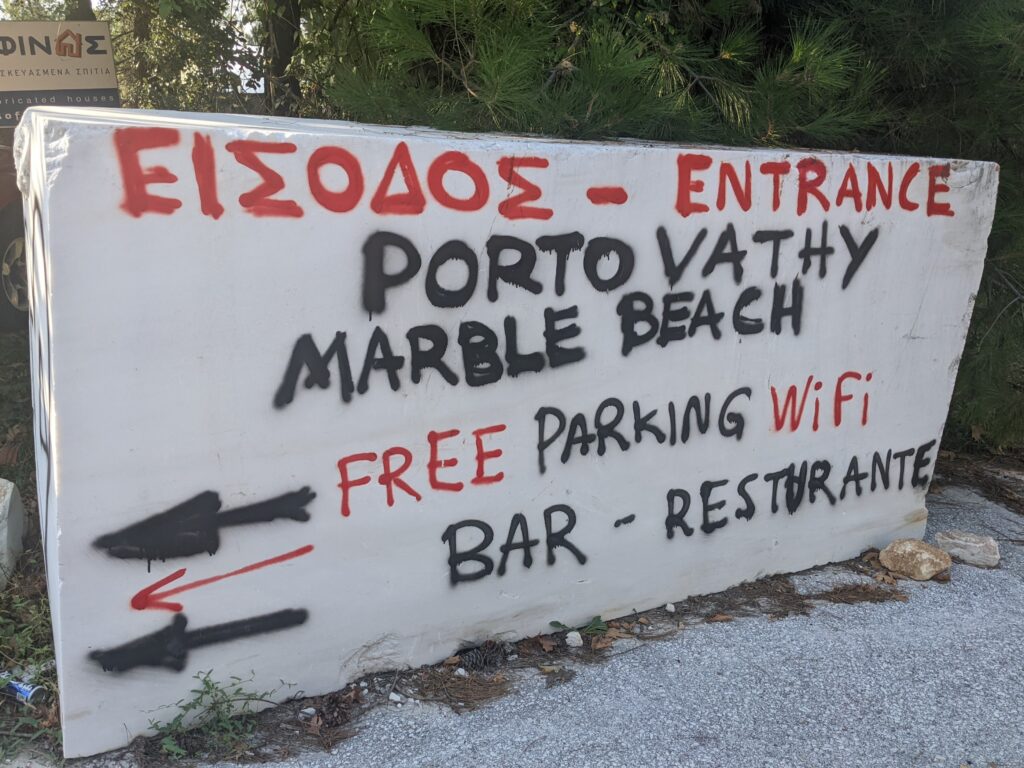
While most of the passing traffic were happy beach goers, the odd marble truck would trundle past leaving a cloud of dust in its wake. Although the views were absolutely epic, this was a little sketchier than I’d anticipated, and we definitely should have accepted the offer of a lift from a kind passing driver.
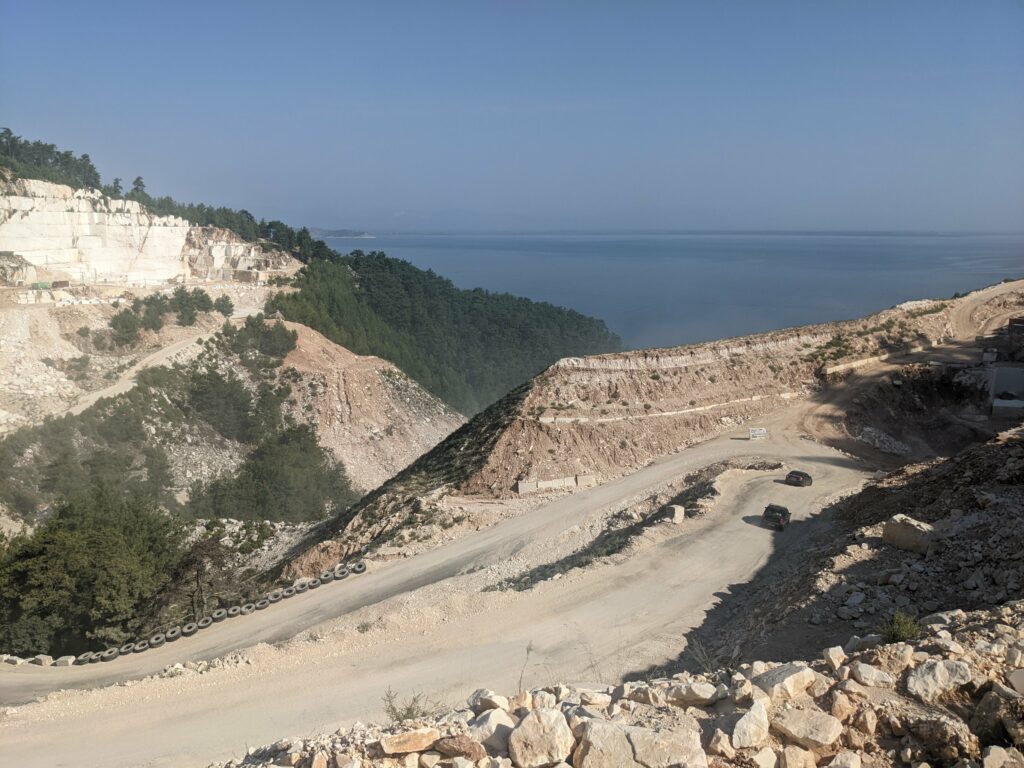
The quarry and hairpin turns finally gave way to Porto Vathy, better known as Marble Beach. Here, the majority of the beach was covered with perfectly white pebbles, with a small amount of slightly more golden sand on its fringes. Somehow, we managed to secure a spot in a (briefly) private sandy cove, before cooling off in the sea.
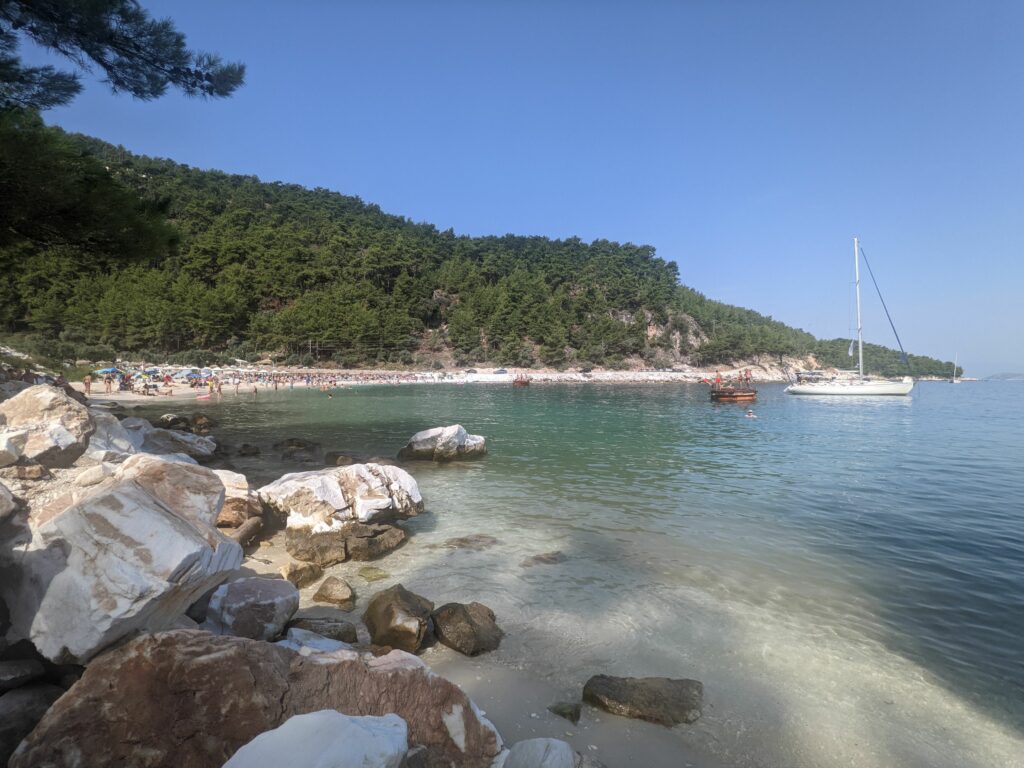
Despite the huge amount of noise generated by the quarry, we couldn’t hear a thing once we’d got to the beach. However, the crane, which I’m guessing was used to load ships in the past, was still a very visual reminder of the quarry.
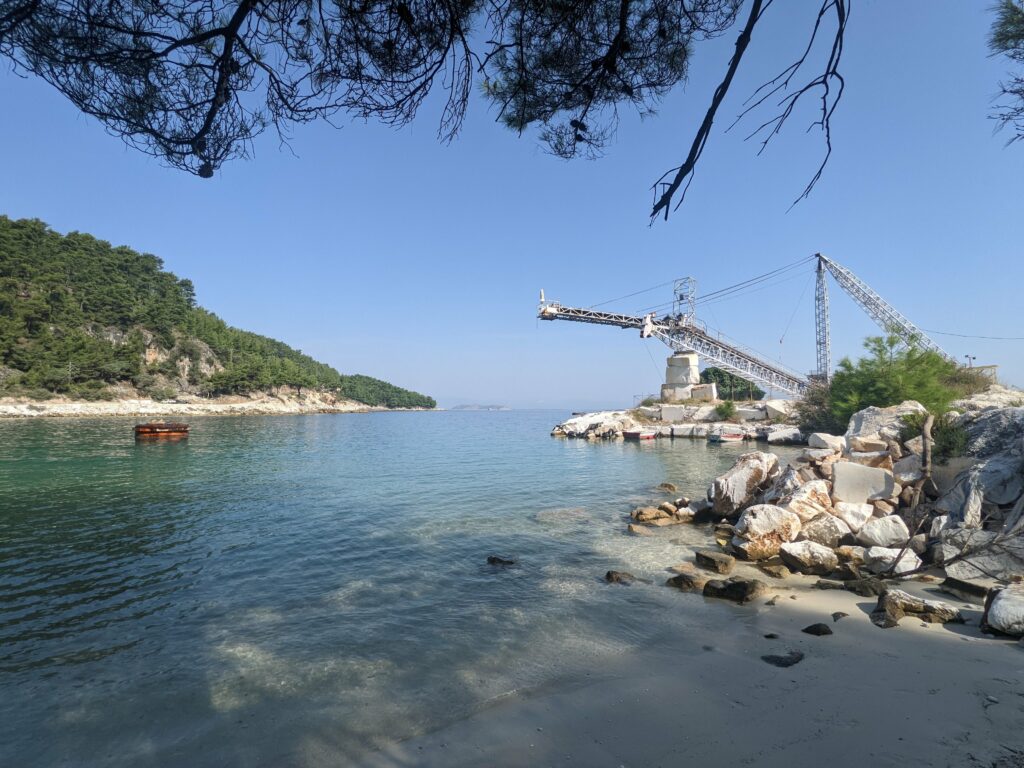
Without wanting the retrace our steps and the 364m of elevation through the quarry, we’d planned to walk back to Limenas along the coast route. All I knew at this point was that Google hadn’t street viewed it, and our guide book discouraged driving this road to reach Marble Beach. Sadly, many people hadn’t read our guide book, so we had to share the dirt track with the odd vehicle that again kicked up a pile of dust. Still, it was very pleasant (and relatively flat) in the gaps between cars.
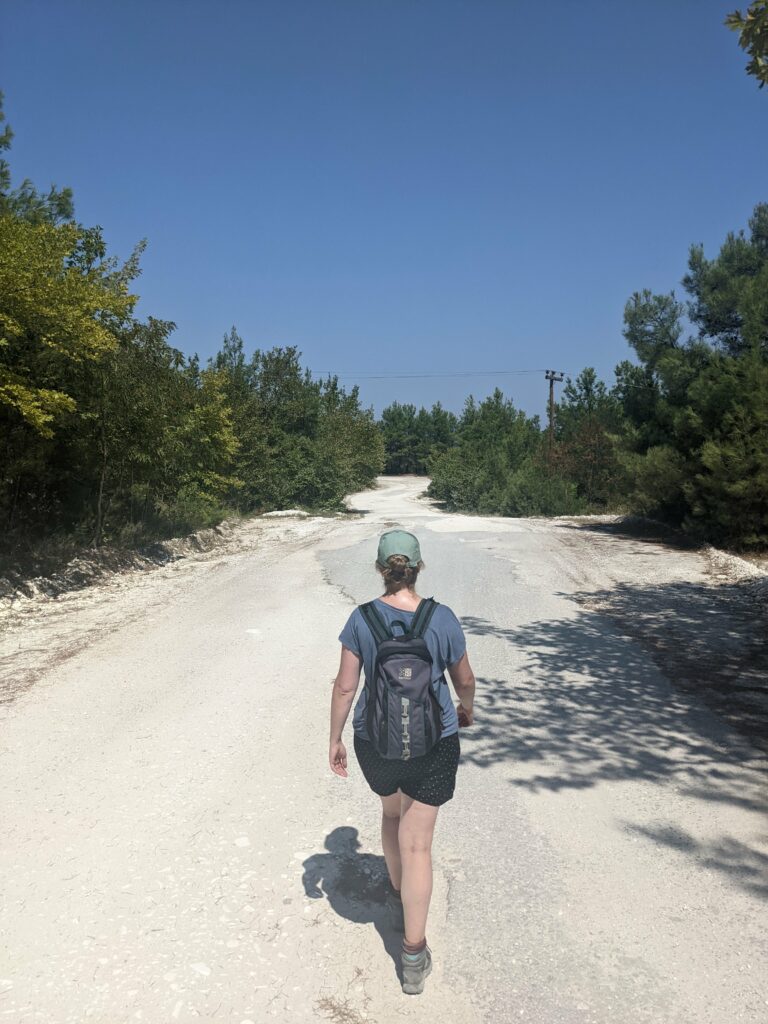
We took a short detour from the dust road via an even smaller track, which thankfully wasn’t used at all by pretty much anything. This route took us past an old watch tower whose height was now dwarfed by the trees in front of it, and a colourful line of (what we guessed were) bee hives. Sara rejected my offer of 5 Euros to open the lid of one of them, so we’ll never know for sure.
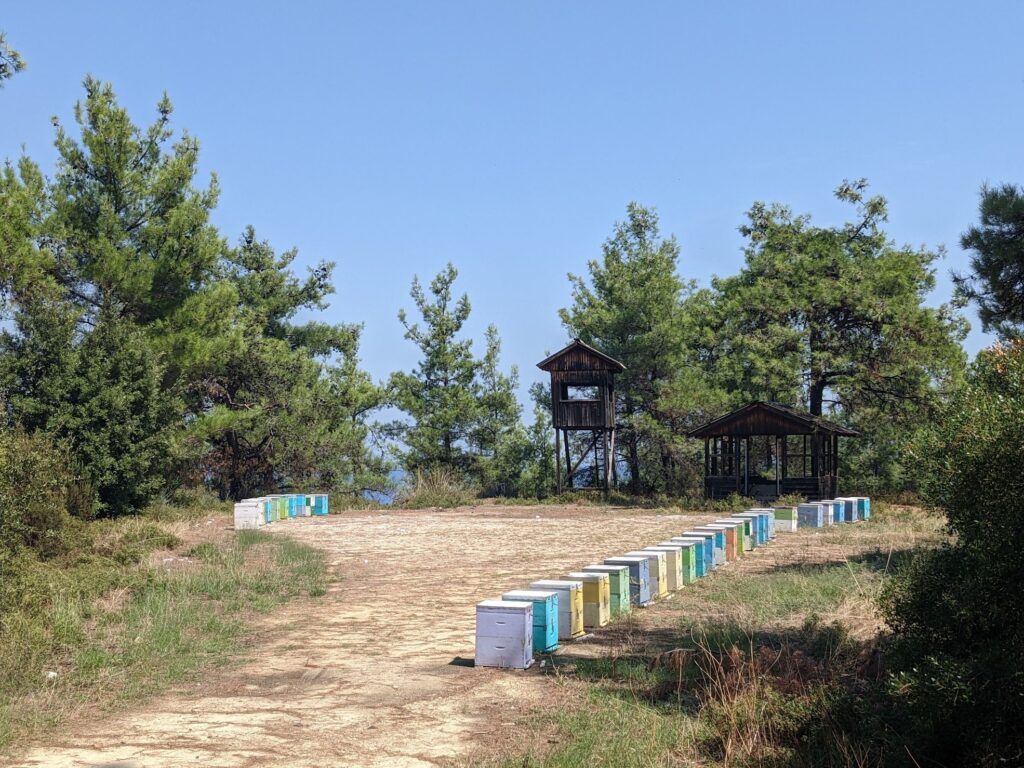
To give you an idea of quite how dusty the passing cars were (and, by extension, how dusty we were too) – some entrepreneur had opened up a car wash where the track eventually met the tarmac again. We seriously considered using it too.
At length, we arrived back in Limenas after covering a total of 13.5 km on foot, and immediately fell into a convenient Souvlaki joint. We ordered 1 litre of water and 1 litre of beer as soon as we could attract the server’s attention. He didn’t seem particularly surprised at this request, though our appearance might have offered some explanation. We then proceeded to demolish the feast we’d ordered out of pure hunger-greed, and spent the rest of the afternoon sleeping off our full bellies with our quest for adventure satisfied.
In summary, although Thasos is possible to explore without a car, it’s certainly not easy. I’d hoped that staying in the island’s largest town would mean that public transport would make up for our lack of private vehicle, but almost by definition, the buses made it pretty hard to get off the beaten track. We’d considered hiring bicycles until we’d actually laid eyes on the island, and 5 minutes into our first bus ride it became pretty clear that cycling was certainly not for the faint hearted.
Bring on the electric car revolution.
